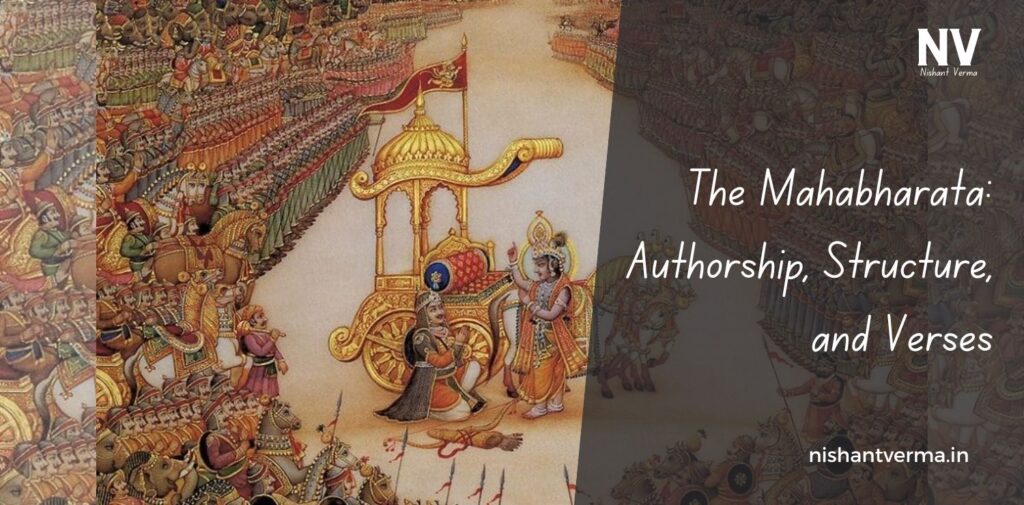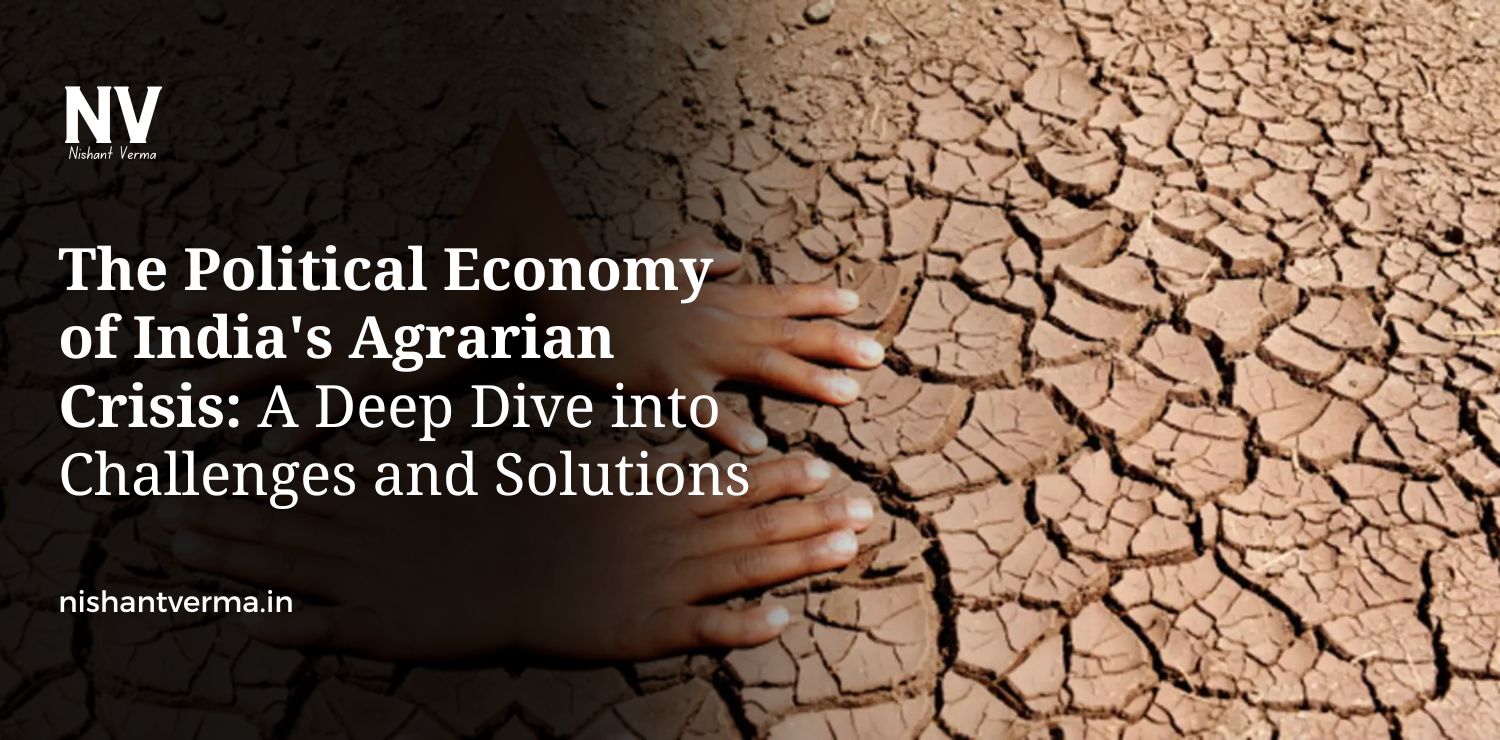The Mahabharata is one of the most significant epics in Indian literature and culture. Spanning centuries, it encompasses a wide range of themes, philosophies, and stories that resonate with humanity’s moral dilemmas and life challenges. This article delves into the authorship of the Mahabharata, its structure, the number of verses it comprises, and the three distinct stages of its development.
Authorship of the Mahabharata
The Mahabharata is traditionally attributed to the Krishna Dvaipayana sage Vyasa, who is also a character within the epic itself. Vyasa, whose name means “compiler” or “editor,” is believed to have composed the Mahabharata around 400 BCE to 400 CE. However, the epic likely underwent several revisions and additions over time, reflecting various cultural and philosophical influences.
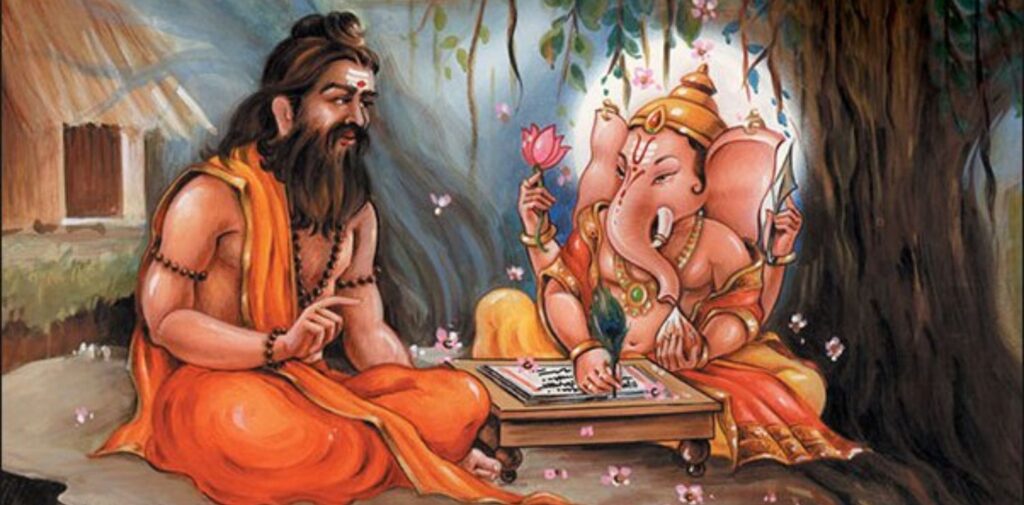
Vyasa: The Sage and His Role
Vyasa is often depicted as a wise sage who possesses profound knowledge and insight. According to tradition, he is not only the author of the Mahabharata but also of the Puranas and the Vedas, positioning him as a key figure in the development of Hindu literature. In the context of the Mahabharata, Vyasa is said to have dictated the epic to Ganesha, the elephant-headed god, who served as his scribe. This partnership is emblematic of the divine inspiration believed to be behind the text.
Evolution Over Time
While Vyasa is credited with the initial composition, the Mahabharata evolved over several centuries. Various authors and poets contributed to its expansion, incorporating local legends, philosophies, and narratives. This layering of stories and ideas makes the Mahabharata not just a historical text but a living document that reflects the changing values of society throughout the ages.
Three Stages of Development
The Mahabharata can be understood in three distinct stages: the original core text, the expansion of narratives, and the compilation of commentaries and adaptations. Each stage not only added depth to the narrative but also significantly increased the number of verses.
Stage 1: The Original Core Text
Verses: Approximately 8,000 to 10,000 shlokas.
In the first stage, the original core narrative, attributed to Vyasa, was composed. This version included the essential stories of the Kurukshetra war, detailing the lineage of the Pandavas and Kauravas, the causes of their conflict, and the key moral dilemmas faced by the characters. The focus was primarily on the epic’s central conflict and its main protagonists.
Stage 2: Expansion of Narratives
Verses: Expanded to approximately 70,000 shlokas.
The second stage involved significant expansion, during which various authors and poets added subplots, philosophical discourses, and teachings. Notable additions during this phase included the Bhagavad Gita, a spiritual dialogue between Prince Arjuna and Lord Krishna, and additional stories that enriched the original narrative. This stage reflects a broader cultural and spiritual context, integrating local legends and diverse philosophical perspectives. The addition of verses during this stage contributed to the epic’s complexity and depth.
Stage 3: Compilation of Commentaries and Adaptations
Verses: Final composition totaling over 100,000 shlokas.
In the third stage, the Mahabharata underwent compilation, with numerous commentaries, adaptations, and translations into various languages. This phase further enriched the text, with many regional versions emerging, reflecting local cultures and interpretations. The epic’s total length grew to over 100,000 shlokas, making it one of the longest epic poems in the world. This ongoing process of adaptation ensures the Mahabharata remains relevant in contemporary culture.
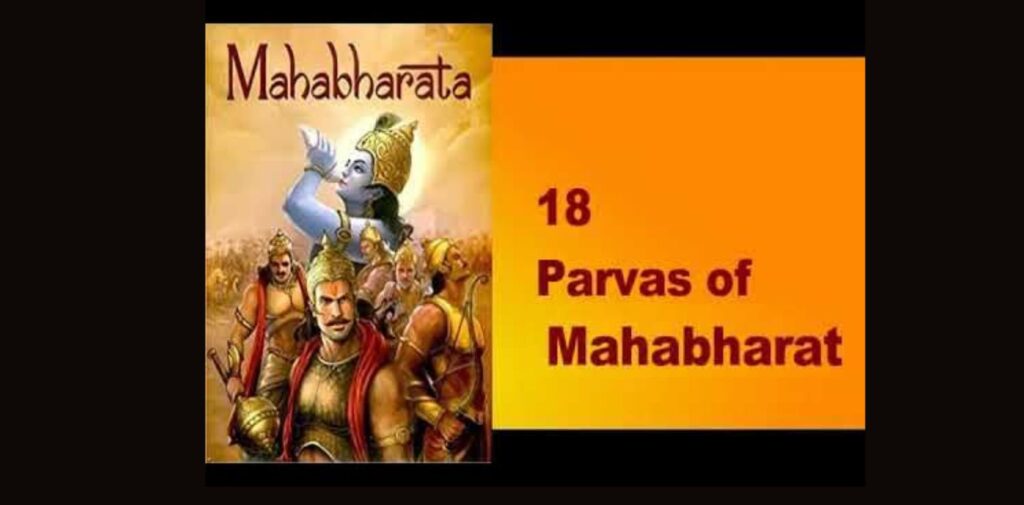
Structure of the Mahabharata
The Mahabharata is vast and complex, traditionally divided into 18 books called “Parvas.” Each Parva contains multiple chapters that explore different facets of the narrative, character development, and moral teachings.
The 18 Parvas
- Adi Parva: The Book of the Beginning
- Sabha Parva: The Book of the Assembly Hall
- Vana Parva: The Book of the Forest
- Virata Parva: The Book of Virata
- Udyoga Parva: The Book of Effort
- Bhishma Parva: The Book of Bhishma
- Drona Parva: The Book of Drona
- Karna Parva: The Book of Karna
- Shalya Parva: The Book of Shalya
- Sauptika Parva: The Book of the Sleeping Warriors
- Stri Parva: The Book of the Women
- Anushasana Parva: The Book of Instructions
- Ashvamedha Parva: The Book of the Horse Sacrifice
- Ashramavasika Parva: The Book of the Hermitage
- Kunti-Bharadvaja Parva: The Book of Kunti and Bharadvaja
- Parva-Sangraha: The Book of Summary
- Anugita Parva: The Book of the Anugita
- Svargarohanika Parva: The Book of the Ascension to Heaven
Each Parva addresses different themes, such as duty (dharma), righteousness, loyalty, and the consequences of war.
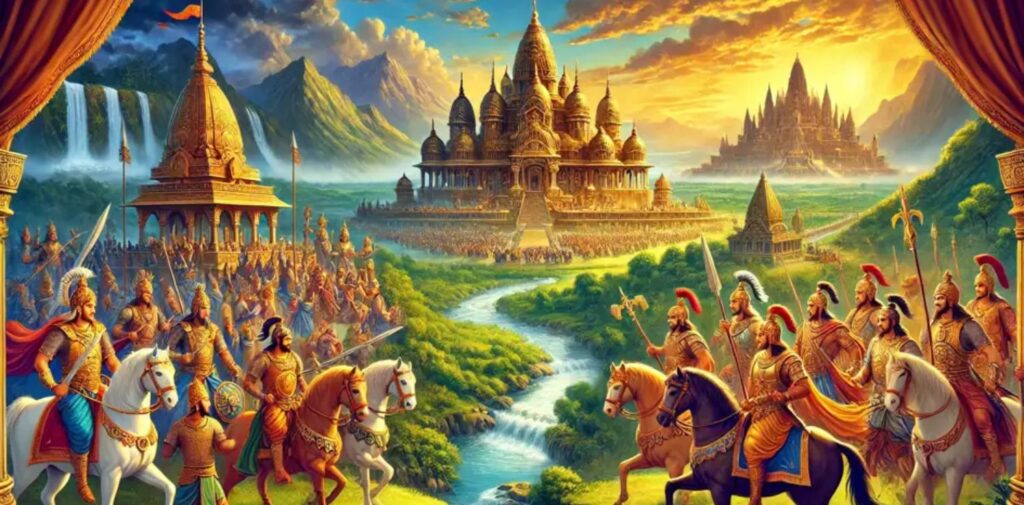
The Interwoven Narratives
The Mahabharata is not merely a story about the Kurukshetra war between the Pandavas and Kauravas. It also contains numerous subplots, philosophical discourses, and moral dilemmas. Notable sections include the Bhagavad Gita, which discusses the nature of duty and righteousness through the dialogue between Prince Arjuna and Lord Krishna.
- Themes and Philosophical Insights: The Mahabharata explores profound themes that continue to resonate with readers today. Some of the key themes include:
- Duty and Righteousness: At the heart of the Mahabharata is the concept of dharma, or duty. Characters often grapple with their responsibilities to their family, society, and themselves. This struggle raises important questions about morality and ethical decision-making.
- The Nature of War: The epic presents a stark portrayal of war, illustrating its devastating consequences. Through the lens of the Kurukshetra war, the narrative delves into the horrors of conflict and the personal tragedies that unfold.
- The Complexity of Human Nature: The Mahabharata is notable for its complex characters, each possessing strengths and weaknesses. This exploration of human nature allows readers to reflect on their own moral choices and the ambiguities of life.
- The Divine and the Human: The interactions between divine figures and humans emphasize the connection between the two realms. Characters like Krishna embody the divine, offering guidance and insight, while also participating in human struggles.
Conclusion
The Mahabharata is a monumental work that transcends its narrative, offering profound insights into duty, ethics, and the human condition. Attributed to the sage Vyasa, the epic evolved through three key stages, each contributing to its complexity and depth: the original core text (approximately 8,000 to 10,000 shlokas), the expanded narrative (around 70,000 shlokas), and the final compilation of over 100,000 shlokas.
As an essential part of global literature and philosophy, the Mahabharata invites readers to ponder the complexities of life and morality. Its enduring relevance is reflected in modern adaptations in literature, film, and art, ensuring that its teachings resonate with new generations around the world. Through its intricate narratives and timeless wisdom, the Mahabharata remains not just an epic of war and rivalry but a profound exploration of life itself.

